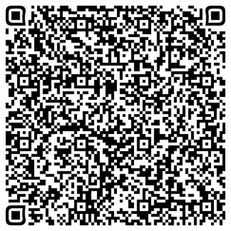June Newsletter 2022
- lisa1122
- Aug 18, 2022
- 4 min read

June is National Migraine & Headache Awareness Month

Can Physical Therapy Help with a Migraine and Headache?
Migraine is a neurological condition marked by intense, often debilitating headaches. It can also be accompanied by symptoms like nausea, sensitivity to light or sound, and numbness or tingling. There are various treatments for migraine, and physical therapy may be helpful in treating migraine for some people.
Physical therapy exercises and techniques for migraine
Physical therapy techniques for migraine can vary, depending on the person and symptoms. The physical therapist will examine you to determine what is needed and how they can best help.
Stretches
Physical therapy can involve stretching and guidance on body mechanics as well as posture. This can help people position their head and neck in a better way, minimizing tension and odd positioning. In turn, the muscles are not as strained or tense, potentially helping to reduce migraine symptoms.
Read more about stretches for migraine relief.
Mobilization
Soft tissue mobilization is also a tool that physical therapists use in the treatment of migraine. This may help relax trigger points that worsen migraine headache symptoms.
Education
Education is a part of many physical therapy appointments. The physical therapist may provide guidance on how to:
sit properly
align your head and neck
exercise and stretch so that your muscles are more relaxed, and to increase range of motion
reduce muscle tension
Does physical therapy treat other types of headaches?
Physical therapy can be used to treat other types of headache, such as cervicogenic headache. While migraine headaches originate in the brain (which may be why physical therapy has mixed results), cervicogenic headache stems from structures in the cervical spine.
Physical therapy is often prescribed for those with cervicogenic headache, according to the National Headache Foundation. The therapist can examine you to see which areas are contributing to symptoms, and then do manual techniques in order to relieve tension and pain, and improve head and neck range of motion. Soft tissue mobilization may be done, as well as education about posture and stretching.
A 2019 review of controlled trials found that physical therapy is more effective than placebo for tension-type headache. These headaches are caused by muscle contractions in the head and neck areas, and can be related to stress. Physical therapy may relieve tension in the head and neck areas, help with posture and positioning, and provide education on how to move to reduce tension and consciously relax under stress.
Article Courtesy: https://www.healthline.com/health/migraine/physical-therapy-for-migraine

Happy Fathers Day from everyone at Agile!
Give Us a Review on Google
We want to hear from you!
One of the best kinds of compliments we can receive is a testimonial from you! Google is where most people search for local services online, and we'd love it if you can go on there and write a little something about us. It's a very simple form and will help us out tremendously in getting the word out there! We really appreciate your support and thank you for being part of our family!
You can scan the QR code with your phone and
it will take you to Google to leave us a review!!
Injury Corner
Snapping Hip Syndrome
Snapping hip syndrome is a common injury where tendons of the hip "snap" or have an audible "pop" over a bony area or from intra-articular pathology. There are 3 types of snapping hip: external, internal or intra-articular.
External snapping hip involves the iliotibial band, also known as IT band, or gluteus maximus tendon slipping over the greater trochanter of the femur.
Internal snapping hip involves the iliopsoas tendon moving over the femoral head, iliopectineal eminence, the lesser trochanter of the femur or AIIS, anterior inferior iliac spine.
Intra-articular snapping hip involves pathology inside the hip joint such as a labral tear or a loose-body within the joint.
In physical therapy, we work to reduce tendon inflammation and improve flexibility by means of manual therapy, stretching and modalities such as iontophoresis patching, laser therapy, trigger point dry needling and cryotherapy. We also use PNF techniques to promote appropriate muscle use and proper mechanics, strengthening the correct muscles to reduce overuse of compensatory muscles.
Greek Chicken Bowls
INGREDIENTS

Greek Chicken & Marinade
1-1/2 pounds fresh chicken breast sliced in half to make thinner
2 tbsp olive oil plus 1 tsp for cooking
3 tbsp lemon juice juice of one lemon
1 tbsp white wine vinegar
2 tbsp oregano
1 tsp garlic powder
1/2 tsp thyme
1 tsp kosher salt *use half if not using Kosher Salt
1/2 tsp black pepper
Greek Cucumber Salad & Rice
2 cups chopped cucumber english cucumber or baby cucumbers
4 roma tomatoes flesh removed, chopped
23 kalamata olives sliced in half, black olives will work too
1/4 small red onion diced small
1/2 cup crumbed feta cheese
1 tbsp olive oil
2 tbsp white wine vinegar
1 tsp oregano, dried
1 tsp garlic powder
1/4 tsp dill weed, dried
1 tsp Kosher salt *salt to taste if not using kosher salt
pepper to taste
2 cups white rice, cooked salted & peppered to taste.
INSTRUCTIONS Greek Chicken & Marinade:
In a large ziplock bag add raw chicken and all of the marinade ingredients above. Close bag. Massage the marinade into the chicken breasts. Place bag in a bowl and refrigerate for up to 8 hours or as little as 30 minutes. *The longer the better, but 30 minutes still works well!*
When the chicken is done marinating: Remove chicken from marinade and discard access marinade. Dab the chicken breasts with a paper towel to remove a little of the extra marinade, but not all of it. Heat a large skillet over medium heat. Drizzle 1 tsp of olive oil into the skillet. Cook chicken for about 4-5 minutes on each side until golden brown and the internal temp reaches 165 degrees. Remove chicken from the pan. Set aside and let it rest for about 8-10 minutes. Slice the chicken up into strips after letting it rest.
To Make Greek Cucumber Salad:
Add all ingredients for the cucumber salad above into a bowl and mix together well.
To Make Greek Chicken Bowls:
If eating right away add 1/2 cup rice, 3/4 cup cucumber salad, and 4 ounces of diced chicken to each bowl. Top with extra feta, if desired. If making this to eat throughout the week combine the chicken and rice and place the cucumber salad into a separate container.
https://theskinnyishdish.com/greek-chicken-bowls/





Comments